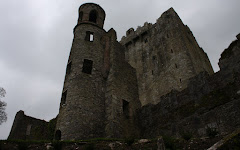“Coca is not a drug.” That statement appears in published articles, particularly with regard to coca use by the Andean people of Ecuador, Peru, and Bolivia; and I know that slogan shows up on T-shirts for tourists, at least in Cusco. Andean people have chewed coca leaves for centuries and brewed “mate de coca” (coca tea) for maybe just a century or two fewer. Certainly coca leaves can be refined to produce purified forms of cocaine; novocaine is a synthetically created derivative of cocaine, by the way. However, in the Andes most people use coca leaves in centuries-old, traditional ways. Research substantiates that when chewed, coca acts as a mild stimulant and suppresses hunger, thirst, pain, and fatigue; it also seems to alleviate symptoms of altitude sickness. Coca leaves have an amazing amount of nutrients as well, which include proteins, carbohydrates, calcium, iron, and vitamins A, B1, B2, and C. Researchers believe chewing the coca leaf has been an important dietary supplement for the Andean people and the reason Andean people have better dental health than many other groups lacking the same degree of dental care.
Okay, all the above is really the scenic route or the annoying detour—you decide—to my real objective: coca and its connection to altitude sickness. All the travel books for Peru, our tour guide Claire, and even Carolee’s travel doctor advised us to drink coca tea to help our bodies acclimate to increasing altitude. Claire even shared an article on coca (and, yes, this article contained the statement “coca is not a drug”) which explained that coca’s chemical makeup might be a reason it seems to alleviate symptoms of altitude sickness and then provided this formula for it: C17H21NO4, especially noting the four oxygens. All of our hotels in the Andean alto plano, beginning in Arequipa, had complimentary coca tea fixings available in the lobby, and so we began imbibing in Arequipa. (Carolee also informed Beth and me that although her travel doctor told her to drink the coca tea, she would test positive for cocaine in a drug test for up to a month afterward!)
Now, those of you who know me very well also know that I dislike tea, any kind of tea, even if it has added infusions of flavors or sugar or milk or lemon or any combination thereof! To me it always tastes like a swill comprised of hot water, grass, leaves and possibly a bit of dirt. Coca tea, though definitely not good-tasting by any means, proved to be not as offensive to me as most teas I’ve sampled. I would take a cup of coca tea at breakfast and then, some other time during the day, one more cup created from the complimentary fixings in the hotel lobby. Carolee hated the coca tea and always added multiple spoonfuls of sugar before drinking hers; I preferred mine “black,” and I chugged it so it wouldn’t inhibit my enjoyment of any aspect of a meal’s real food and drink.
I mentioned in my previous post that at the coca shop in Arequipa Claire insisted everyone on Tour Intrepid purchase at least one coca product to consume during our day on the road between Arequipa and Puno. I purchased coca toffees and cookies made with coca flour. I liked the toffees, but the cookies engaged my gag reflex with the first swallow. Beth actually bought some coca leaves as part of her purchase, and Carolee, Beth, and I all tried a coca leaf chaw . . . and each of us only managed one chaw, too! It was just way too much like chewing—well, leaves!
In the end, our consumption of coca didn’t save any of us from at least some symptoms of altitude sickness, but perhaps our suffering was eased!
 This is NOT one of Beth's better photographic angles, but she wanted to document the coca leaf chaw!
This is NOT one of Beth's better photographic angles, but she wanted to document the coca leaf chaw!
"In certain valleys, among the mountains, the heat is marvellous, and there do groweth a certain herb called Coca, which the Indians do esteem more than gold or silver; the leaves thereof are like unto Zamake (sumach); the virtue of this herb, found by experience, is that any man having these leaves in his mouth hath never hunger nor thirst."
-Augustin de Zarate, contador real
under Viceroy Blasco Nuñez Vela
































No comments:
Post a Comment